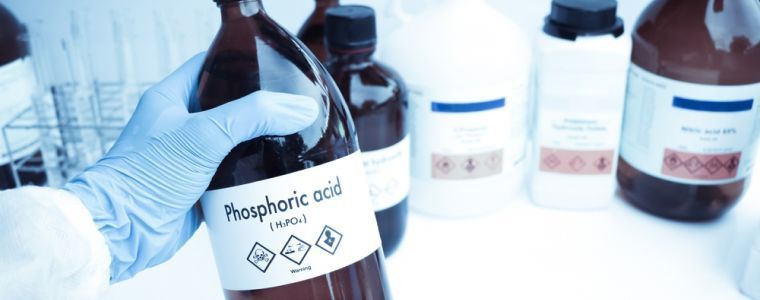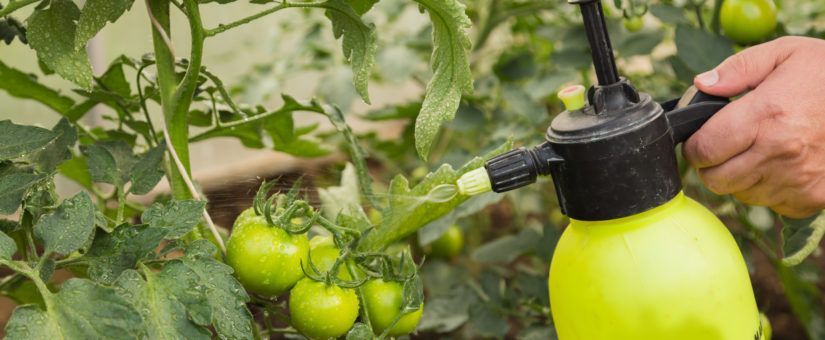How to Use Potassium Sulfate Effectively and Potential Challenges (Part 2)
In the first part of our potassium sulfate series, we explored its unique properties and diverse benefits. Now, we delve into its practical applications across industries and address some common challenges users may encounter. Whether it’s as a key fertilizer in agriculture or a vital component in industrial processes, potassium sulfate has proven its versatility and efficiency.
At Decachem, we pride ourselves on being a trusted supplier of high-quality potassium sulfate, supporting our clients with both innovative solutions and expert guidance.
Tips for Application in Farming
When using potassium sulfate in farming, it is important to follow proper dosage recommendations to avoid over-application and ensure optimal plant growth. A typical application rate is 100-200 kg per hectare, depending on soil nutrient levels and the specific crop requirements. However, soil testing is recommended to determine the exact dosage for your crops, ensuring balanced nutrient availability and preventing deficiencies or excesses.
Seasonal Considerations
Potassium sulfate should be applied during key growth stages, such as pre-planting or early vegetative growth, when potassium demand is highest. For fruiting crops, apply during the flowering and fruit-setting stages to support potassium and sulfur needs. Avoid applying close to harvest to prevent potential residue buildup.
Best Practices for Blending with Other Fertilizers
Potassium sulfate can be blended with other fertilizers like nitrogen and phosphorus to provide a well-rounded nutrient mix. However, it’s important to avoid mixing with fertilizers containing high chloride content, as this can counteract the benefits. Always follow manufacturer guidelines when blending to ensure proper nutrient release.
Safety Measures and Handling Guidelines
When handling potassium sulfate, wear appropriate protective equipment, such as gloves and safety goggles, to prevent irritation. Store the product in a cool, dry place to maintain its efficacy. Always handle the fertilizer in dry conditions to avoid clumping or moisture absorption.

Potential Challenges and Considerations
Cost-Effectiveness and Availability
Potassium sulfate is generally more expensive than other potassium fertilizers, like potassium chloride, due to its manufacturing process and higher purity. However, its cost is often justified for high-value crops sensitive to chloride, where it offers better results. Farmers can balance costs by using precise application methods and leveraging its efficiency in meeting crop nutrient requirements.
Supply Chain and Availability
Potassium sulfate availability can be affected by global supply chain challenges, including transportation issues, mining limitations and fluctuations in raw material prices. Farmers may experience periodic shortages, which could drive up costs and make sourcing difficult.
Risk of Overuse and Nutrient Imbalance
Overuse of potassium sulfate can lead to nutrient imbalances in soil, particularly an excess of potassium, which may inhibit the absorption of other vital nutrients like calcium and magnesium. Regular soil testing is crucial to avoid overapplication and ensure proper nutrient balance, supporting sustainable agricultural practices while optimizing crop yield and quality.
Conclusion: Why Choose Potassium Sulfate?
Potassium sulfate offers key benefits such as enhanced plant growth, improved crop quality and reduced risk of soil salinity. Its chloride-free composition makes it ideal for sensitive crops like tobacco and citrus, while its sulfur content promotes better protein synthesis and resilience. Beyond agriculture, it plays a vital role in glass manufacturing and pharmaceuticals. Potassium sulfate’s versatility across various sectors, coupled with its eco-friendly production methods, supports sustainable farming practices and industrial processes. As a reliable source of essential nutrients, it continues to be an invaluable resource for boosting productivity and promoting long-term agricultural and industrial sustainability.
FAQs About Potassium Sulfate
Q1: Is potassium sulfate organic or synthetic?
Potassium sulfate is typically considered a synthetic fertilizer when produced through industrial processes. While it can be derived from natural mineral sources like langbeinite, most potassium sulfate available on the market is manufactured through chemical synthesis, where potassium chloride reacts with sulfuric acid or other sulfur compounds. However, potassium sulfate can be used in organic farming if it meets the standards set by organic certification bodies, as it is free of synthetic additives or contaminants. In this context, it is considered a natural source of potassium and sulfur, though its production is still synthetic in nature.
Q2: How does potassium sulfate improve plant health?
Potassium sulfate improves plant health by enhancing key growth processes. It boosts photosynthesis by regulating stomatal function, increasing energy production. It also promotes strong root development, improving water and nutrient uptake, especially under stress. The sulfur in potassium sulfate aids in protein synthesis and nitrogen utilization, contributing to balanced growth. Additionally, it strengthens disease resistance by improving cell wall structure and helps plants tolerate environmental stresses like drought, temperature extremes and salinity. Overall, potassium sulfate supports healthier, more resilient plants, leading to improved crop yield, quality and long-term plant vitality.
Q3: Can it be used in organic farming?
Yes, potassium sulfate can be used in organic farming, as it is considered a natural source of potassium and sulfur. However, it must meet the standards set by organic certification bodies, such as the USDA Organic or EU Organic regulations. Potassium sulfate derived from natural mineral sources like langbeinite is typically allowed in organic farming. However, potassium sulfate produced through synthetic chemical processes may not always be permitted in organic systems, depending on the specific certification rules. Farmers need to verify that the product meets the necessary organic standards before use.
Q4: What are the environmental benefits of potassium sulfate?
Potassium sulfate offers several environmental benefits. Its chloride-free composition reduces the risk of soil salinity, promoting healthier soil and crops, especially in areas prone to salinity. The fertilizer is a sustainable option, derived from natural mineral sources or produced with minimal environmental impact, supporting eco-friendly farming practices. It helps balance soil nutrients by providing potassium and sulfur without causing harmful chloride excess. Additionally, potassium sulfate is water-soluble, ensuring efficient nutrient uptake by plants and reducing nutrient runoff, which helps prevent water pollution and eutrophication. Overall, it supports both crop health and environmental sustainability.
Q5: How is it different from other potash fertilizers?
Potassium sulfate differs from other potash fertilizers in its chloride-free composition, making it ideal for chloride-sensitive crops like tobacco, grapes and citrus. Unlike potassium chloride, which only provides potassium, potassium sulfate supplies both
potassium and
sulfur, supporting better plant health and growth. The sulfur aids in protein synthesis and other metabolic processes. Additionally, potassium sulfate is less likely to cause soil salinity, making it a better option for areas with poor drainage. While it is more expensive than potassium chloride, its benefits for sensitive crops and soil health often justify the higher cost.
















